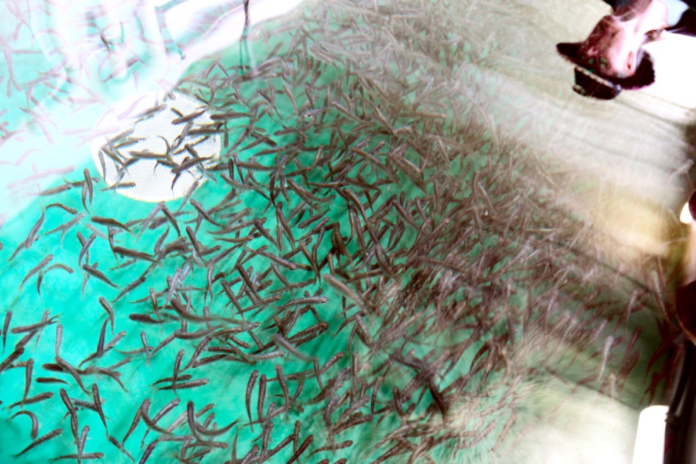The hatchery will help maintain healthy levels of Chinook and steelhead
TNG will be opening a new, permanent hatchery in Hanceville to help fish populations recover. Pictured here are chinook smolts at TNG’s interim conservation hatchery which began operating in 2023.
1 / 1 TNG will be opening a new, permanent hatchery in Hanceville to help fish populations recover. Pictured here are chinook smolts at TNG’s interim conservation hatchery which began operating in 2023. Advertisement
The Tŝilhqot’in National Government (TNG) is partnering with Fisheries and Oceans Canada (DFO) to open a salmon conservation hatchery.
The hatchery will be operated by the TNG in collaboration with the DFO and is intended to support the Tŝilhqot’in by helping local fish recover from recent population declines.
“It’s our main food source so we have to keep the stock up…so that our people can have a good fishing season every year,” said vice-chair of TNG and Tŝideldel Nits’ilʔin (Chief) Otis Guichon in an interview with Black Press Media.
A TNG press release notes Tŝilhqot’in territory, which includes the entire Chilcotin watershed, is a salmon stronghold and is home to the strongest annual sockeye run of the Fraser River. The watershed includes three salmon-bearing watersheds: the Chilcotin, the Chilko and the Taseko Rivers.
While the press release said Tŝilhqot’in fishery is one of the most sustainable in the world, recent years have witnessed the number of salmon in the region decline, with particular concern over Chinook and steelhead, the latter of which has neared extirpation.
While it is unclear what exactly is causing populations to decline, recent landslides have certainly had an impact.
“Due to the Tŝilhqox landslide this summer, our people did not harvest fish,” said Nits’ilʔin Joe Alphonse and tribal chair of TNG.
“Salmon are a life source for people, lands and animals as they make their journey through the ocean and waterways. Our people are happiest when they can fish – we must do everything we can to ensure that we will always have fish in our territory.”
The project will replace an interim hatchery which began operations in 2023 after TNG, which represents six Tŝilhqot’in communities, identified salmon conservation as a priority.
The hatchery will be located on the Chilcotin River in Hanceville, about a one-hour drive southwest of Williams Lake, and is hoped to be open by fall 2026 or the following year.
The federal government, which has provided $675K to the TNG over the past year to help with fishery related activities and landslide recovery, will be funding construction of the new hatchery.



